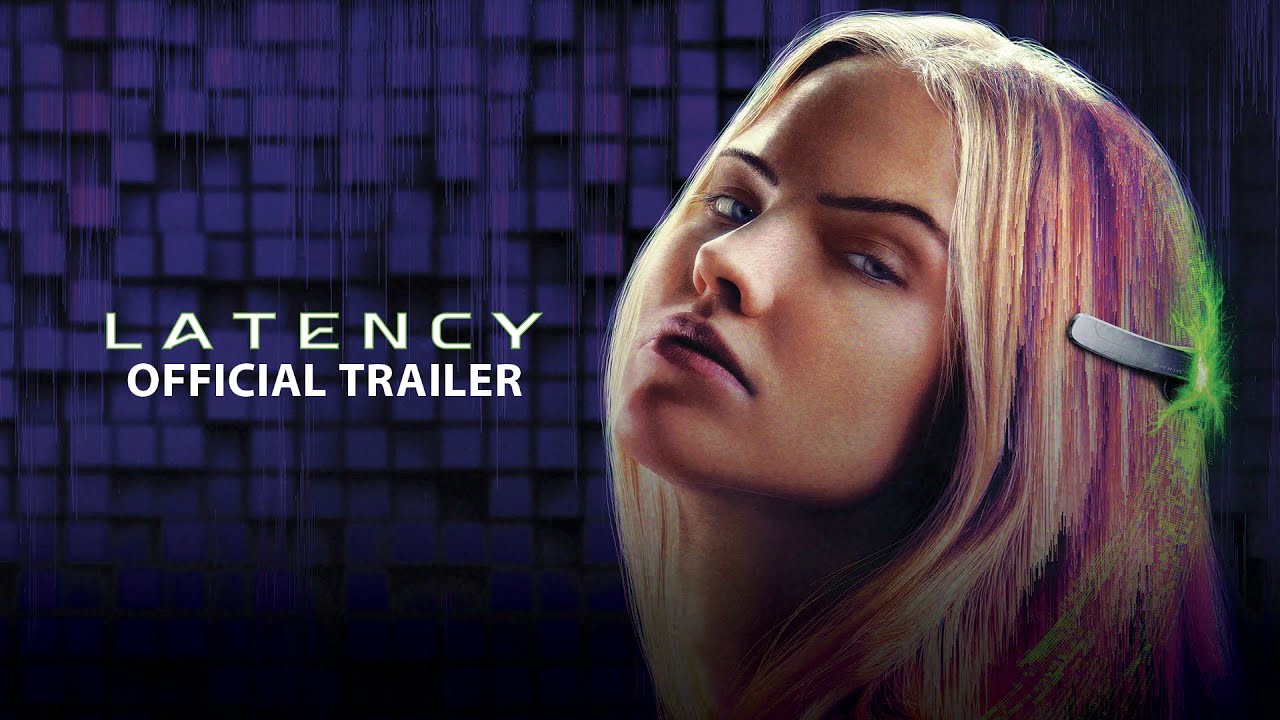🎬 Latency (2024)

Latency (2024) Review: A Thrilling Dive into the Future of Gaming and Mind Control
Introduction
Latency (2024) is a gripping sci-fi thriller that delves into the dark side of emerging technology, where gaming, neuroscience, and artificial intelligence intersect in unsettling ways. Directed by James Croke, this film explores the consequences of pushing human cognition beyond its natural limits. With a compelling storyline, stunning visuals, and a hauntingly relevant theme, Latency challenges audiences to rethink the future of immersive technology.
Plot Overview
The film follows Hana (played by Sasha Luss), an elite gamer who discovers a revolutionary new technology that directly connects the human brain to digital experiences. What starts as an exciting innovation quickly spirals into a psychological and existential nightmare. As Hana pushes the boundaries of her abilities, she begins to experience terrifying side effects, blurring the line between reality and virtuality. With every session, her perception of the real world becomes increasingly distorted, leading her down a dark path of paranoia and danger.
Themes and Social Commentary
1. The Dangers of Technological Overreach
One of the most thought-provoking aspects of Latency is its critique of unchecked technological advancement. In a world where virtual reality (VR) and neural interfaces are rapidly evolving, the film poses an important question: How much is too much? The ability to interface directly with digital spaces may seem like the next logical step in gaming, but Latency highlights the ethical and psychological risks involved.
2. Mind vs. Machine
The film expertly explores the fragile relationship between human consciousness and artificial augmentation. Hana’s experiences showcase how immersive technology can alter perception and create dependencies, drawing parallels to real-world concerns about gaming addiction and AI’s role in shaping human cognition.
3. Reality vs. Illusion
As Hana becomes increasingly immersed in the digital world, her grasp on reality weakens. This theme echoes classic sci-fi films like The Matrix (1999) and Inception (2010), where characters struggle to discern what is real. The film’s psychological depth keeps viewers questioning: Can we ever fully trust our own minds when technology is involved?
Cinematic Execution
Direction and Cinematography
James Croke masterfully crafts a visually arresting experience. The film’s cinematography plays a crucial role in immersing the audience into Hana’s world, using seamless transitions between the virtual and real to heighten suspense. The use of neon lighting, cyberpunk aesthetics, and glitch effects adds to the film’s eerie, futuristic atmosphere.
Performance and Character Development
Sasha Luss delivers a powerful performance as Hana, portraying her descent into paranoia with gripping intensity. Her character arc is well-developed, making her struggles and transformation feel authentic. Supporting performances, particularly from Alexis Ren and other key cast members, add layers of intrigue and emotional weight to the narrative.
Sound Design and Musical Score
The film’s sound design plays a pivotal role in enhancing its tension and immersive qualities. The soundtrack, composed of electronic and ambient scores, accentuates the unsettling nature of Hana’s experiences. The use of distorted sound effects further blurs the line between reality and illusion, creating an auditory experience that keeps viewers on edge.
Comparison to Similar Films
Latency (2024) shares thematic similarities with films like Black Mirror: Bandersnatch (2018), Ready Player One (2018), and Ex Machina (2014). However, what sets Latency apart is its unique focus on gaming culture and the psychological implications of direct neural integration. While other films explore AI and virtual reality, Latency zooms in on the personal toll such advancements can take on an individual’s psyche.
Strengths of the Film
- Engaging and Relevant Concept: The premise of Latency taps into current discussions about AI, VR, and the future of gaming, making it a timely and thought-provoking watch.
- Strong Visual and Auditory Experience: The cinematography, CGI, and sound design work together to create an immersive and unsettling atmosphere.
- Compelling Lead Performance: Sasha Luss’s portrayal of Hana adds depth and believability to the story.

Potential Weaknesses
- Pacing Issues: Some viewers may find the film’s pacing slow in the first act as it establishes its world and characters.
- Complex Narrative: The psychological and philosophical depth of the film may leave some audiences feeling confused or overwhelmed.
Conclusion: A Must-Watch for Sci-Fi Enthusiasts
Latency (2024) is a must-watch for fans of psychological sci-fi thrillers. Its exploration of technology’s impact on human perception, combined with stunning visuals and a gripping narrative, makes it one of the most thought-provoking films of the year. Whether you’re a gamer, a tech enthusiast, or simply someone who enjoys a well-crafted thriller, Latency delivers an unforgettable cinematic experience.